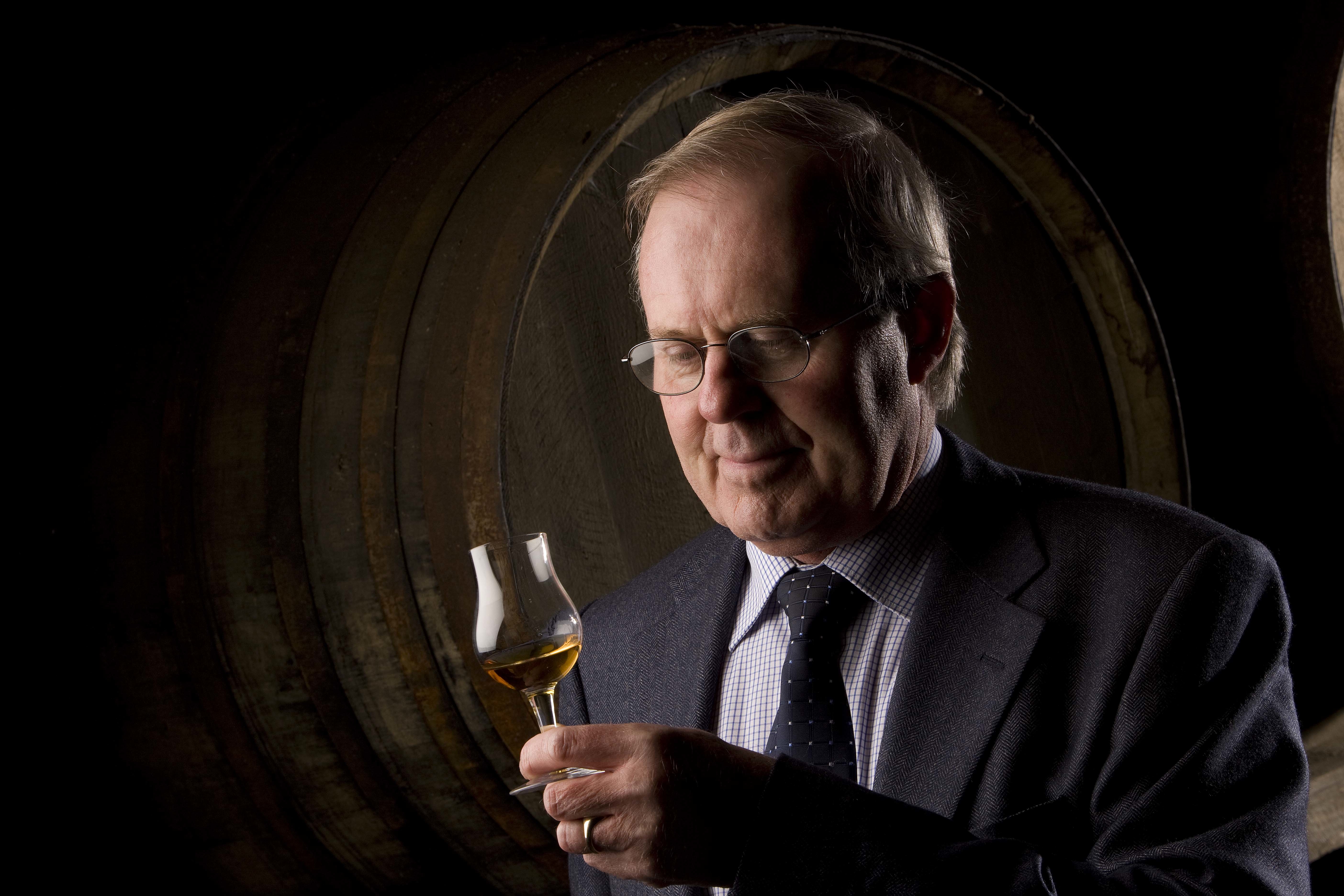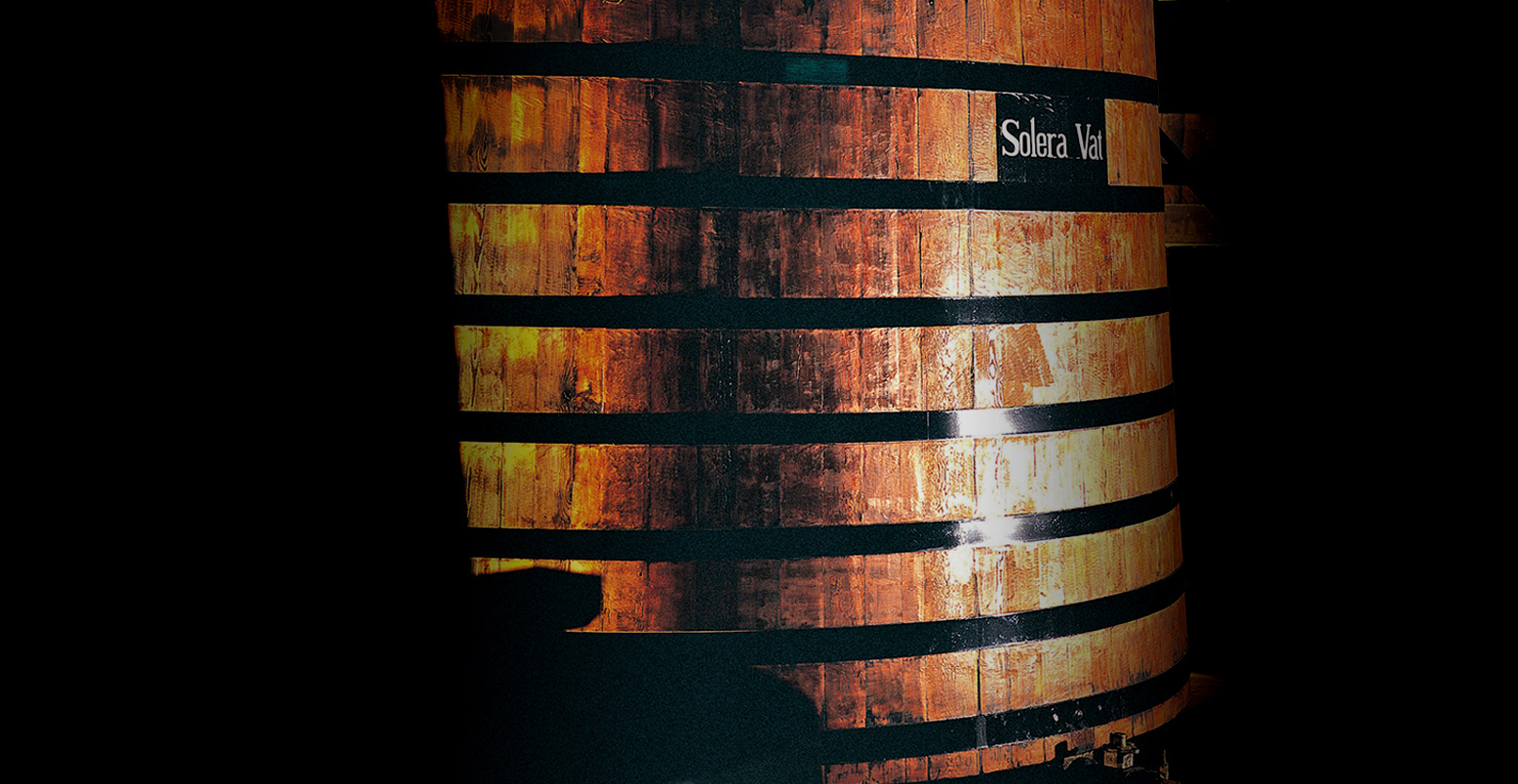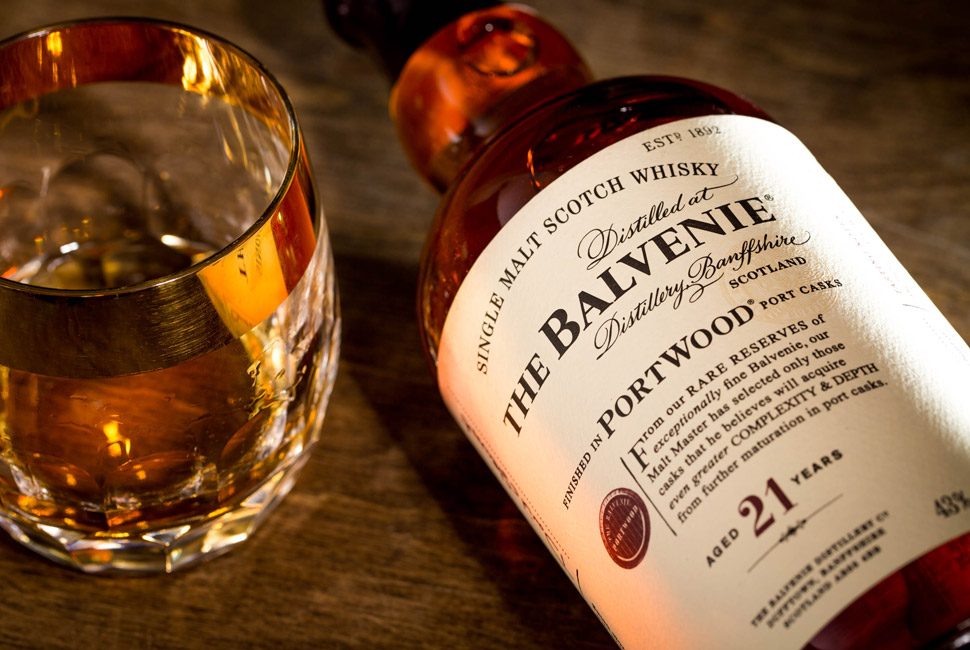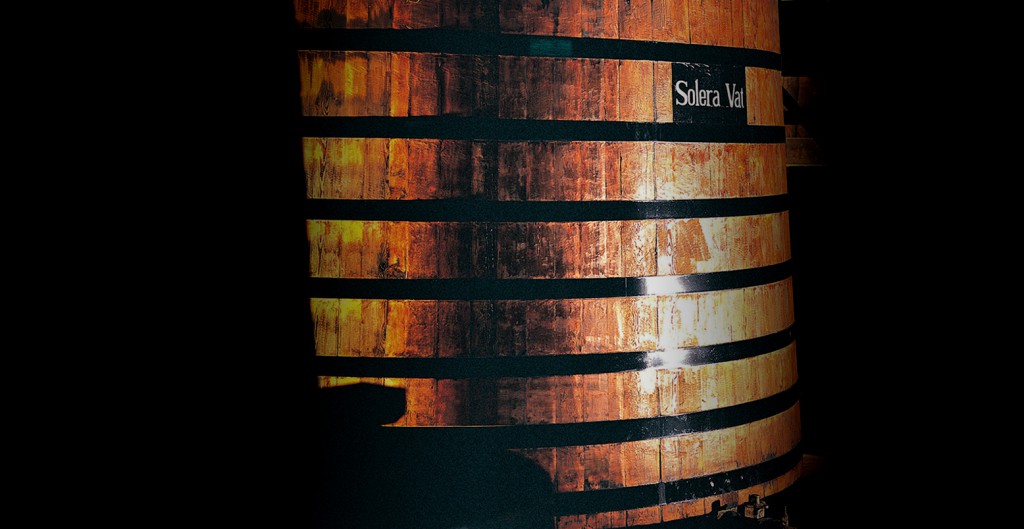Vi har fått en exklusiv intervju med legenden David Stewart som under nästan 54 år varit i whiskyindustrin och som är mest känd som malt master hos Balvenie Destilleriet. I denna öppenhjärtliga intervju berättar David om hur hans väg inom whisky varit samt hur han ser på kylfiltrering och färgning av whisky.
I vanlig ordning följer först originalintervjun på engelska, men i slutet finns en svensk översättning.

Mr Stewart, please introduce yourself for our readers?
I’m David Stewart, malt master for The Balvenie. I’ve been with the company and in the industry for almost 54 years, I’m one of a handful of malt masters in the industry and I’m the longest serving of all.
How did you first get involved in the whisky industry?
By accident really, I just saw this avert in the newspaper for a Whisky Stock Clerk and I applied and got the Job. I was very lucky to start in the right side of the business as my boss was the Master Blender.
You started as a whisky stocks clerk in 1962 for William Grant & Sons. What kind of jobs have you tried on your way to becoming a master blender and distillery manager and what did you learn from them?
For the first two years I did mostly clerical jobs, like marking off casks of whisky that had been used in our blends and passing various invoices that came through the department. However after two years Hamish Robertson, the then malt master for the company, got me into our sample room and started me off on my nosing journey. I sampled everything that came through the sample room mainly new spirit and vatting and bottling samples. From time to time Hamish would draw cask samples from the warehouse to show me how whisky evolves as it ages and also from American and European oak casks.
I also started to allocate whiskies for our blends and single malts and spent some time training at our malt and grain Distilleries. I was never a Distillery Manager as that takes different skills. This training took roughly ten years.
You have experimented a lot with double and triple maturation. Can you share with us some experiment´s that did not work out and why?
You are correct some experiments just don’t work and if it doesn’t then I am not forced to bottle it even although the experiment has taken more than one year, we just need to start all over again. Generally fortified wines seem to work the best. Some other spirits like Brandy, Cognac or some red and white wines have not worked with The Balvenie however rum does work and has allowed us to release a number of rum finishes.
Please, could you explain the Solera system for our readers?
The Glenfiddich Solera Reserve 15yo was developed in the mid 90s and launched in 1998. We use four different wood types i.e New American virgin oak barrels, 1st fill American oak bourbon barrels, refill American oak bourbon barrels and 1st fill European oak sherry casks. With the exception of the new virgin oak barrels where we finish 15yo Glenfiddich for a number of months all of the rest have had a full 15 years maturation. We use different percentages of these cask types to fill the Solera vat which is never less than half full. All of this whisky goes into our marrying tuns for approx. three months prior to bottling.

What is the proudest moment(s) in your whisky career?
I think that the launch of the Balvenie DoubleWood 12 years old in 1993. To see after 22 years how well liked and enjoyed this whisky has become and how our sales have increased makes me very proud. The Balvenie DoubleWood has certainly allowed us to develop other finishes and was the start of The Balvenie becoming a recognise single malt.
What is your top five drams that you have not been involved in?
I tend to prefer similar Speyside malts similar to our own
What is your top five drams that you have been involved in?
My favourite Balvenie is the Port Wood 21 years old. However I obviously like the 12 years old at the 17years old DoubleWoods as well. One of my favourite limited releases was the 17 years old Madeira finish.
What is your opinion on chill filtration and the adding of e 150 in whisky?
Each single malt is different and will have its own signature style depending on a number of different factors, not least the cask that the liquid has matured in. 60%-80% of the characteristics of a single malt Scotch whisky come from the maturation process and the quality of the wood used for the casks is central to the taste and flavour.
The use of colouring in single malt Scotch whisky is an industry wide practice and very much permitted under stringent Scotch Whisky Association (SWA) regulations. A very small amount of Caramel E150a may be used to ensure absolute consistency in the colour of the whisky from one bottle to the next. William Grant & Sons occasionally use colouring and it has absolutely no impact on the taste, aroma and quality of our exceptional single malt Scotch whiskies.
Most blended whisky is chill filtered and some single malts. The industry has been doing this practice for a long time now to avoid the whisky throwing a haze in the bottle and has ensured that no flavour is removed from the whisky during this process.

Have you tried any Swedish whisky? If so, what did you think of it?
Yes I have been to the Mackmyra Distillery and sampled some of their expressions with Angela their Master Blender. They do make a few different styles and they are all very well matured and of great quality.
What is your opinion on the trend of NAS whisky?
For me age remains very important and they make it clearer to consumers exactly what they are buying and are an indicator of quality. On occasions like with The Balvenie Tun 1401 and 1509, where the whisky in those bottlings ranged from anywhere between 21- and 40-years-old, there was a compelling proposition where we really didn’t want to put an age on and for good reason.
Finally: Do you have any whisky advice for our readers?
I enjoy whisky with a small amount of pure still water added which does help to release the aroma and does also open up the flavour. The exception might be when ones drinking aged whisky where just a dash of water may be required or none at all.
Här följer intervjun översatt till svenska.

Mr Stewart, kan du presentera dig för våra läsare?
Jag heter David Stewart, malt master på The Balvenie. Jag har varit i företaget och industrin i nästan 54 år, är en av en handfull malt masters i industrin och den som jobbat längst.
Hur började din karriär inom whiskyindustrin?
Av en slump egentligen. Jag såg en annons i en tidning där de sökte en lagerkontorist för whisky och jag ansökte och fick jobbet. Jag var verkligen lycklig att få möjlighet att börja från rätt sida av verksamheten eftersom min chef var Master Blender.
Du började alltså som lagerkontorist 1962 hos William Grant & Sons. Vilka typ av jobb har du provat på din väg mot att bli master blender och destillerichef och vad lärde du dig av dem?
Under de två första åren gjorde jag mest kontorsjobb, såsom att avgränsa whiskytunnor som hade använts i våra blandningar samt ta hand om olika fakturor som kom till avdelningen. Men efter två år tog vår dåvarande malt master, Hamish Robertson, in mig till vårt ”sample room” och startade min blendningsresa. Jag samplade allt som kom genom ”the sample room” vilket mestadels var råsprit, maltblandningar och buteljeringsprover. Från tid till annan tog Hamish med mig till lagret och tog fatprover för att visa mig hur whisky utvecklas när det åldras både på amerikanska och europeiska ekfat.
Jag började även att fördela whisky för våra blends och single malts och tillbringade en tid med att träna vid våra malt och grain destillerier. Jag har dock aldrig varit Destillerichef, då det kräver ett annat kunnande. Totalt tog min ”läroperiod” ungefär tio år.
Du har experimenterat en hel del med dubbel och trippel lagring. Kan du dela några experiment som inte fungerade och varför?
Ni har helt rätt, vissa experiment fungerar helt enkelt inte och då väljer jag att inte buteljera whiskyn, även om projektet tagit mer än ett år, utan vi får helt enkelt börja om från början. Generellt verkar starkvinsfat fungera bäst. Vissa andra spritdrycker såsom Brandy och Konjak samt några röda och vita viner har inte heller fungerat med Balvenie. Däremot verkar Rom fungera bra och har gett oss möjlighet att släppa ett antal med Rom finish.
Vänligen, kan du förklara The Solera System för våra läsare?
The Glenfiddich Solera Reserve 15yo utvecklades i mitten av 90-talet och lanserades 1998. Vi använder fyra olika träslag; nya amerikanska ekfat, 1st fill amerikanska bourbonfat, refill amerikanska bourbonfat samt europeiska sherryfat. Med undantag för de nya ekfaten där vi slutlagrar 15-åriga Glenfiddich under ett antal månader, har alla övriga lagrats i 15 fulla år. Vi använder olika procentsatser av dessa fattyper för att fylla Solera blandningen och som aldrig får bli mindre än halvfull. All denna whisky får sedan gifta sig i vår Solera Vat som är avsett för detta ändamål i cirka 3 månader innan buteljering.

Vilket tillfälle är du stoltast över i din whiskykarriär?
Jag tror att det är lanseringen 1993 av Balvenie DoubleWood 12 years. Att efter 22 år se hur omtyckt och uppskattad denna whisky har blivit och hur vår försäljning har ökat gör mig väldigt stolt. Balvenie DoubleWood har verkligen gett oss möjlighet att utveckla andra slutlagringar och den var startskottet till att Balvenie blivit en erkänd single malt.
Vilka är dina topp 5 drams som du inte varit involverad i?
Jag tenderar att föredra liknande Speyside malt som vår egen.
Vilka är dina topp 5 drams som du har varit involverad i?
Min Balvenie-favorit är Port Wood 21 år. Men naturligtvis gillar jag 12-åringen och 17-åringen av DoubleWood också. En av mina favoriter bland de med begränsad utgåva var 17-åringen som slutlagrades på Madeira fat.
Vad är dina åsikter rörande kylfiltrering och att addera e150 i en whisky?
Varje single malt är unik och kommer att ha sin egen stil beroende på ett antal olika faktorer, inte minst fatet som spriten mognat i. 60-80 % av egenskaperna hos en single malt whisky kommer från mognadsprocessen och kvaliteten på det trä som används för faten är av central betydelse för smak och arom.
Användningen av färg i en single malt whisky är vanligt i branschen och tillåtet enligt de stränga reglerna från Scotch Whisky Association (SWA). En mycket liten del karamellfärg E150a kan användas för att säkerställa absolut konsekvens i färgen på en whisky från flaska till flaska. William Grant & Sons använder ibland färg och det har absolut ingen inverkan på smaken, aromen eller kvaliteten på våra exceptionella single malt whiskies.
De flesta blended whisky är kylfiltrerad samt några enstaka maltwhiskies. Branschen har haft denna praxis under lång tid nu för att undvika att whiskyn blir grumlig i flaskan och man har säkerställt att ingen smak avlägsnas från whiskyn under processen.

Har du provat någon svensk whisky? Vad tyckte du i så fall om den?
Ja, jag har varit hos Mackmyra Destilleriet och samplat några av deras varianter tillsammans med Angela som är Master Blender där. De gör lite olika stilar och de är alla mycket väl lagrade och utvecklade med hög kvalitet.
Vad är din åsikt om den ökade trenden av NAS whisky?
För mig är åldersangivelse fortfarande mycket viktigt och gör det tydligare för konsumenterna att exakt veta vad de köper och är dessutom en indikator på kvalitet. När det gäller speciella utgåvor såsom Balvenie Tun 1401 och 1509, där whiskyn i de olika utgåvorna var mellan 21 och 40 år gammal, fanns det ett övertygande beslut där vi inte ville sätta en ålder och det av en god anledning.
Till sist, har du något whiskyråd till våra läsare?
Jag njuter av whisky där man tillsatt en liten del rent vatten som hjälper till att frigöra dofter och som öppnar upp smaken. Undantaget kan vara när man dricker gammal whisky där bara en ytterst liten skvätt vatten krävs eller inget vatten alls.
